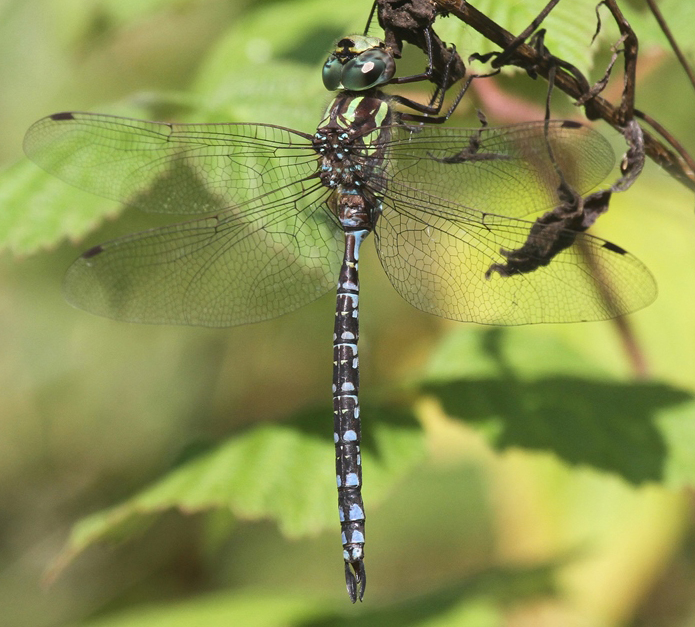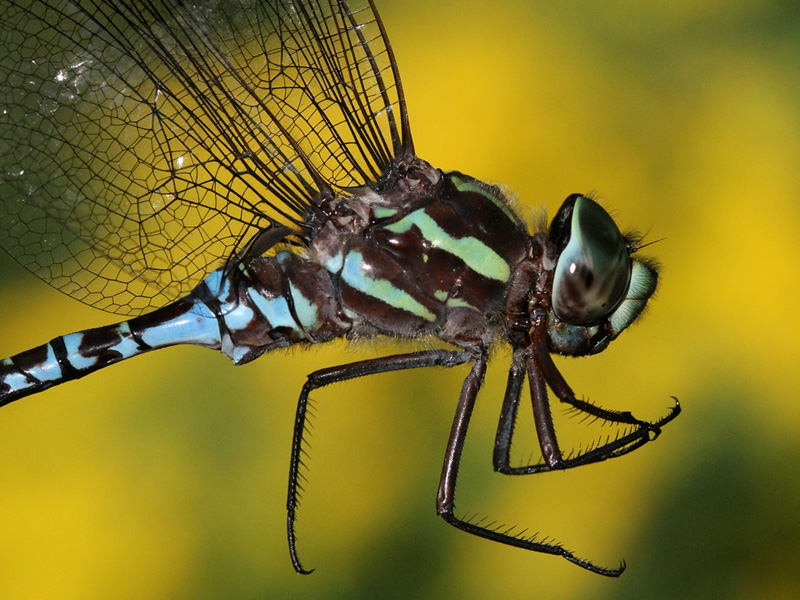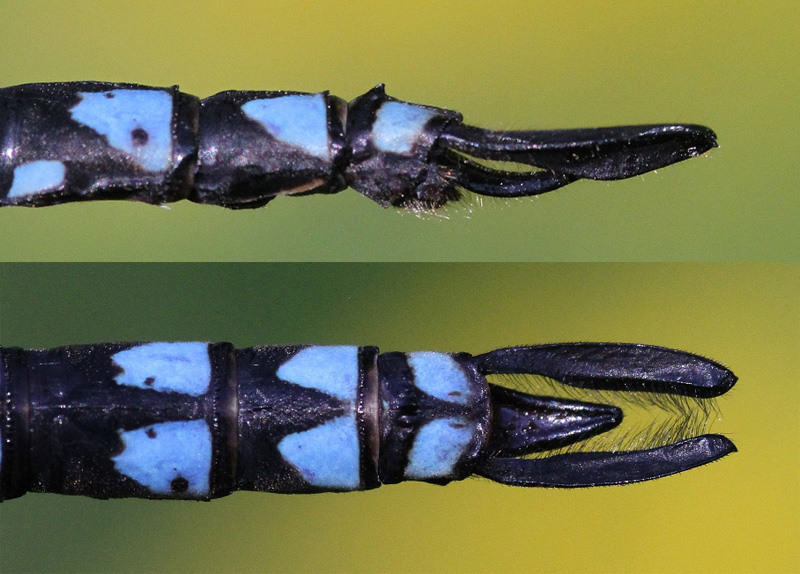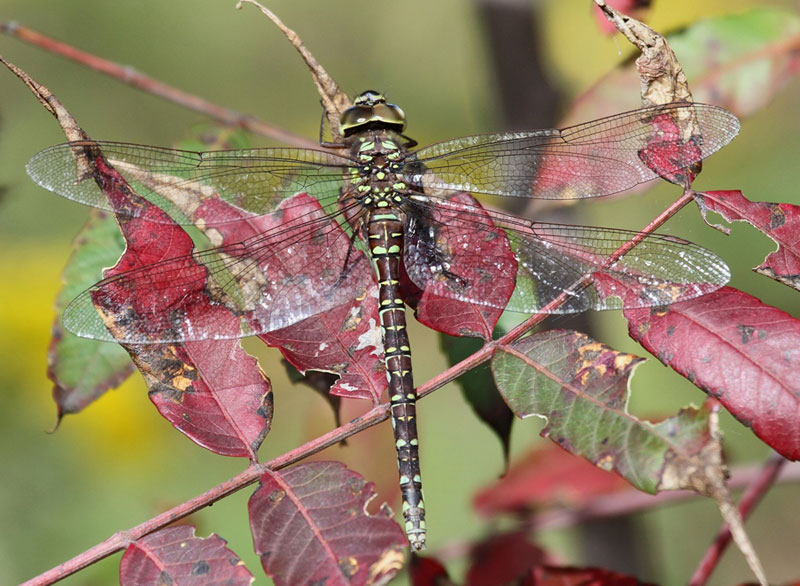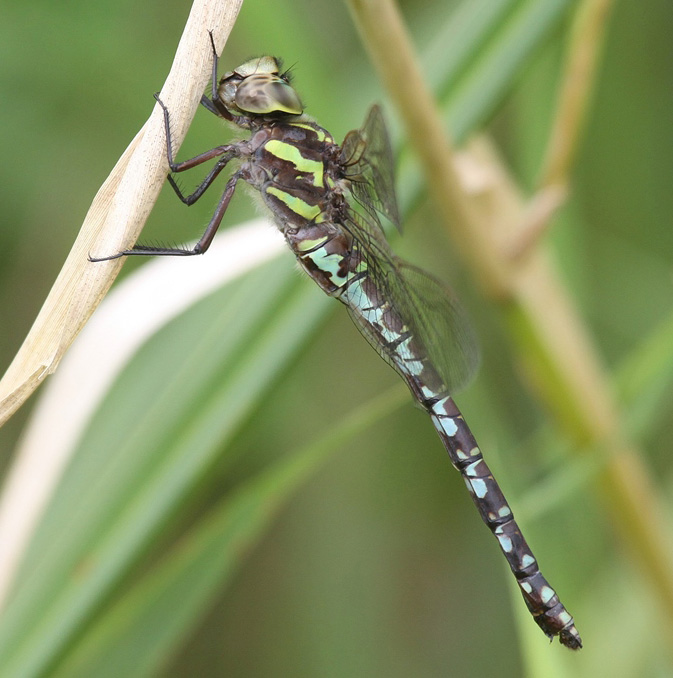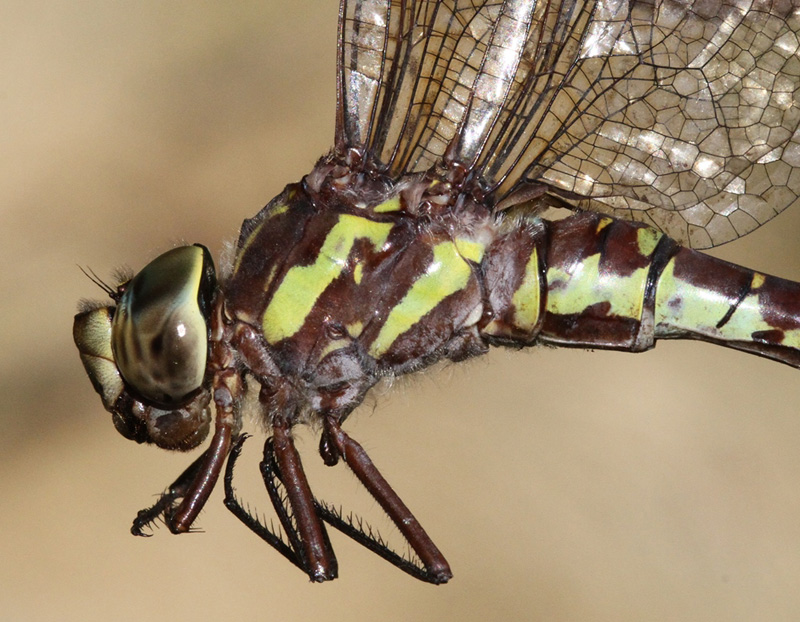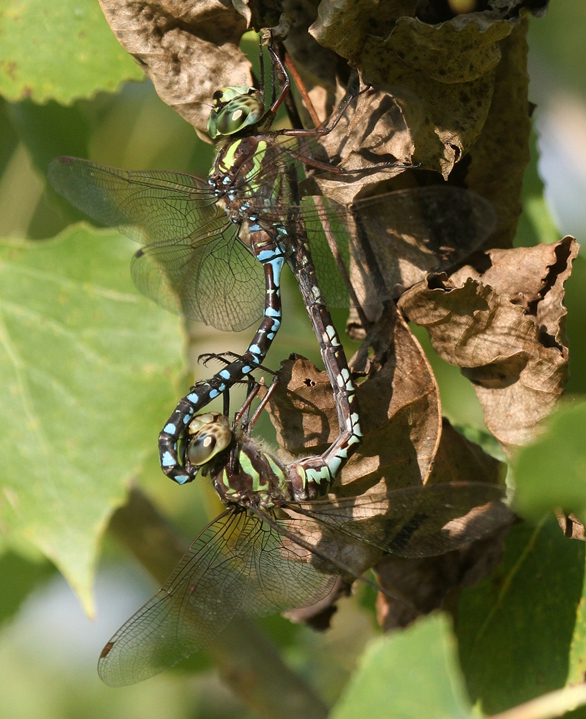




Aeshnidae, Darner Family
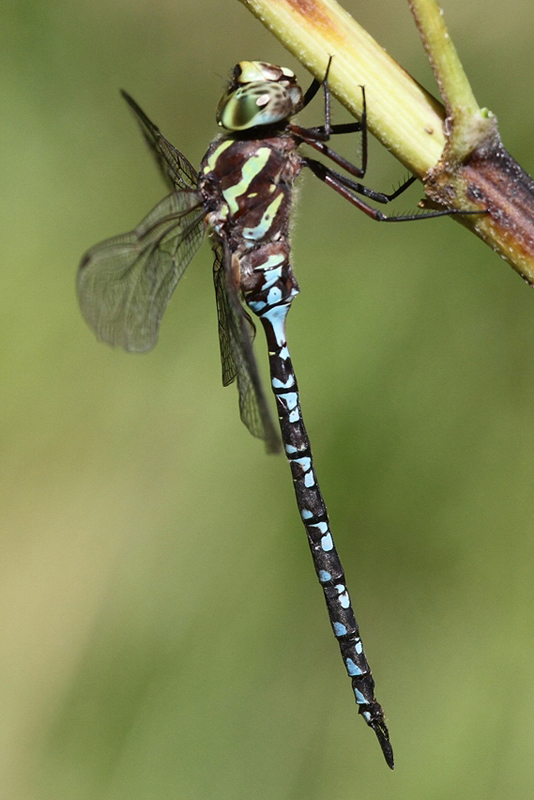
The mosaic darners of the genus Aeshna (aka blue darners) are large, strong-flying dragonflies with late-season flight periods. Most are similar to each other in size and general coloration, so in-hand examination is usually necessary to identify them. The most important distinguishing characteristics for this genus are the shapes and colors of the pale stripes on the sides of the thorax, especially the first or anterior stripes (here referred to as anterior thoracic side stripes [ATSS]), and the shapes of the cerci (upper pair of claspers) at the tip of the abdomen (whether paddle type or wedge type). Other marks that are often helpful include the presence/absence of a black line across the face, and the sizes of the pale spots on top of the abdominal segments (S), including the presence/absence of a spot on S10. Refer to the images of Aeshna species on the species pages of this website to compare shapes of thoracic side stripes and consult any dragonfly field guide for illustrations of the claspers (some guides are listed in the Resources Section).
Status-Global/State:
Distinguishing Characteristics:
Green-striped darners are very similar to Canada darner and lake darners because all three have deeply notched anterior thoracic side stripes (though with some differences - see Distinguishing Characteristics of those species) and the males all have paddle-type claspers. It is difficult to separate female green-striped darner from female green-form Canada darner in the field.† Separate both genders from larger lake darner by lack of a black line across the face that lake darner possesses. Green-striped darner differs subtly from Canada darner in the color and shapes of the thoracic side stripes, and details of the male’s terminal appendages and female's ovipositor (see Canada darner page and field guides by Mead 2003 [2nd ed.] and Paulson 2011).
†DuBois, R. 2017. Reliability of field marks for distinguishing females of Aeshna canadensis (Canada Darner) and Aeshna verticalis (Green-striped Darner). ARGIA 29(1): 40-43.
†DuBois, R. 2017. Reliability of field marks for distinguishing females of Aeshna canadensis (Canada Darner) and Aeshna verticalis (Green-striped Darner). ARGIA 29(1): 40-43.
Description of Habitat/Range:
Found at spring-fed ponds, marshy meadows, marshy lakes, ponds, and slow streams bordered by sedges, this species is fairly common in parts of its range in northeast from Virginia and Minnesota to Maine, including southeastern Canada. It is widely distributed throughout Wisconsin, although uncommon. Preferred habitats here are fens, wet sedge meadows, and ponds, usually with some contribution of spring flow; also some marshy lake shores and well-vegetated slow streams. Often joins mixed-species feeding swarms.
Flight Season:
Mid-June to late September in Wisconsin.
(Click on photos to enlarge)
